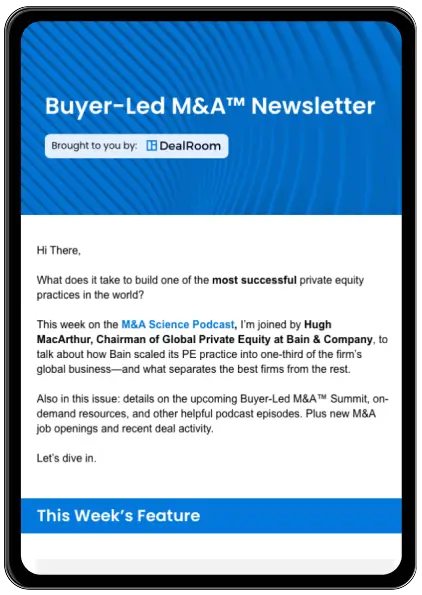Blog
M&A Blog by Dealroom – exclusive insights and expertise on the Mergers & Acquisitions market, along with practical ideas for successful M&A
Featured
.png)
DealRoom Unveils Major Enhancements to DealRoom AI with New AI-Powered Document Organization and Intelligence
New AI assistants automatically organize and analyze diligence documents, giving deal teams faster access to critical information and earlier visibility into potential risks.


The Buyer-Led M&A™ Newsletter by DealRoom
A no-nonsense take on what drives real value in modern M&A


See DealRoom in Action
Discover why DealRoom is the best merges and acqusitions software for Corporate Development teams managing multiple deals. Simplify your M&A lifecycle, boost efficiency, and reduce friction — all in one platform.




.webp)

.webp)

.webp)






.webp)
.webp)

.webp)

.webp)
.webp)
.webp)
.webp)

.webp)

.webp)
.webp)
.webp)
.webp)
.webp)

.webp)
.webp)
.webp)
.webp)
.webp)
.webp)
.webp)

.webp)

.webp)










.png)
.png)
.png)
.svg)

.svg)
.png)
